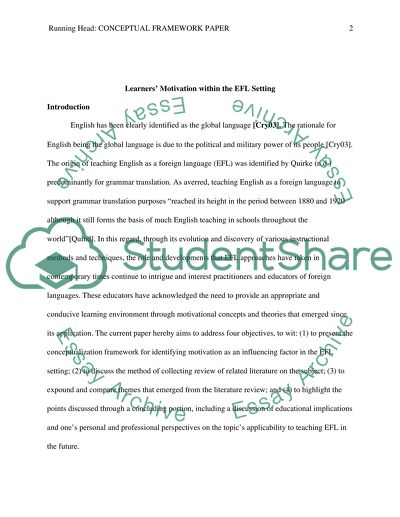Cite this document
(“Learners Motivation within the EFL Setting Term Paper”, n.d.)
Retrieved from https://studentshare.org/english/1392966-learners-motivation-within-the-efl-setting
Retrieved from https://studentshare.org/english/1392966-learners-motivation-within-the-efl-setting
(Learners Motivation Within the EFL Setting Term Paper)
https://studentshare.org/english/1392966-learners-motivation-within-the-efl-setting.
https://studentshare.org/english/1392966-learners-motivation-within-the-efl-setting.
“Learners Motivation Within the EFL Setting Term Paper”, n.d. https://studentshare.org/english/1392966-learners-motivation-within-the-efl-setting.


